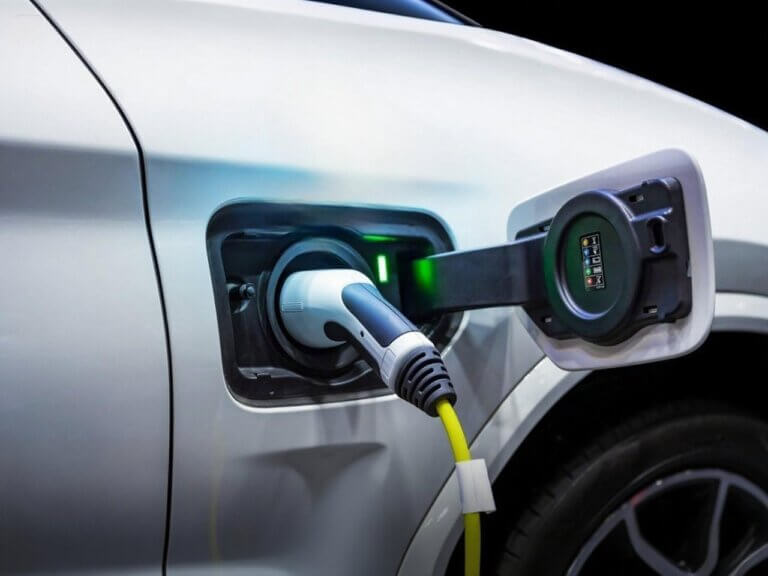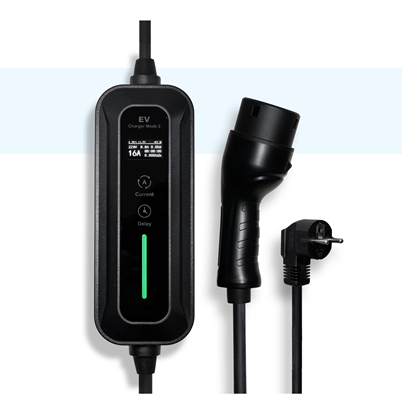In a recent interview, Harry Bajaj, founder of EV tech firm Mobec Innovation, stressed the urgent need to address “range anxiety” through flexible, mobile charging solutions. His #PledgeForChange campaign calls on businesses to help develop a more reliable EV infrastructure, particularly in regions where fixed charging networks remain limited. Against this backdrop, the EV portable charger has become a practical tool. It allows businesses to expand charging access without being constrained by permanent installations.
For sectors like logistics, fleet management, and commercial real estate, this shift underscores a growing need: deployable charging solutions that work wherever fixed infrastructure is unavailable or impractical. As EV adoption accelerates, providing fast, safe, and scalable charging is no longer optional—it’s a key part of operational readiness. Among available options, the portable electric car charger stands out for its plug-and-play flexibility, ease of deployment, and lower upfront investment.
But how can businesses ensure they’re choosing a charger that’s truly reliable, compliant, and suitable for long-term use? This guide outlines the essential features of a dependable EV portable charger, helping B2B buyers compare options with clarity and avoid costly procurement errors.
Understand Your Use Case First
Before comparing technical specifications, businesses should start by identifying how the charger will be used in practice. Is it meant to support an in-transit logistics fleet? Will it serve employee vehicles in a semi-permanent parking area? Or is it intended for mobile charging at events or remote sites?
Each use case comes with different priorities: for example, fleet operations may require higher power output and fast charging capability, while mobile deployments call for compact design and weather resistance. Clearly defining your operational needs from the outset will help you focus on products that are fit for purpose—saving time and reducing procurement risk.
What Defines a High-Quality EV Portable Charger?
Robust Safety Mechanisms
Safety should always come first. A reliable charger must have:
- Overcurrent, overvoltage, short-circuit, and over-temperature protection
- Leakage current detection
- Built-in ground fault protection
Ensure the product meets international safety standards like CE, UL, or TUV. This is not only important for user safety, but also often required for corporate liability and insurance compliance.
Power Output & Charging Speed
For businesses with time-sensitive operations, charging speed can directly impact productivity. Look for:
Adjustable current settings ranging from 8A to 32A
Models offering 3.7kW EV portable charger or 7kW-22kW EV portable charger
For businesses with time-sensitive operations, charging speed can directly impact productivity. Look for:
- Adjustable current settings ranging from 8A to 32A
- Models offering 3.7kW EV portable charger or 7kW-22kW EV portable charger
- Fast charging compatibility for commercial vehicles
Devices that allow dynamic power management—adapting output to the vehicle’s demand—are especially useful for shared or public access situations.
Connector and Voltage Compatibility
A high-quality portable charger must support:
- Type 1 (SAE J1772) and/or Type 2 (IEC 62196) connectors
- Wide voltage input range (100–240V) for international deployment
- Frequency adaptability (50Hz / 60Hz)
Also verify whether the charger supports single-phase or three-phase AC, depending on your electrical infrastructure and vehicle types.
Durability in Real-World Environments
Commercial use typically involves heavy handling, outdoor exposure, or frequent relocation. Look for:
- IP65 or higher water and dust protection rating
- Casing made of flame-retardant, UV-resistant materials
- Reinforced cable insulation and strain relief
Choose models tested under industrial-grade environmental standards to ensure long-term durability.

Portability & Usability
True portability means more than just being lightweight. A good EV portable charger should include:
- Cable length between 5–10 meters, flexible and tangle-resistant
- Clear LED or LCD displays showing real-time voltage, temperature, and charging status
- Plug-and-play functionality, with minimal setup required
- Optional carrying case or wall-mount bracket for storage
User-friendliness is especially critical when the device will be used by non-specialists, such as employees, drivers, or event staff.
After-Sales Support and Warranty
A good warranty is more than a marketing line—it reflects a supplier’s confidence in their product. When evaluating vendors, look for:
- Minimum 12–24 month warranty
- Clear documentation on certifications, test reports, and usage guidelines
- Access to technical support, ideally with regional service options
- Availability of replacement parts and firmware updates
Reliable after-sales service is critical for B2B buyers, especially if the devices will be deployed across multiple locations or integrated into customer-facing services.
Quick Procurement Checklist
When comparing products or requesting quotes, consider:
- Power Output & Current Range: kW rating and adjustability
- Connector & Voltage Compatibility: Ensure fit with your vehicle/system
- Durability: IP rating and environmental resistance
- Cable Design: Length and weight for portability
- User Interface: Display clarity and ease of operation
- Certifications: CE, UL, TUV compliance
- Warranty & Support: Coverage and service availability
Final Thoughts
A reliable EV portable charger supports not just vehicle charging, but also operational continuity, employee convenience, and long-term infrastructure readiness. For businesses planning to deploy EVs, these chargers provide flexible and cost-effective solutions. They connect mobility with infrastructure and can easily scale to meet needs.
Rather than simply choosing based on price, B2B buyers should assess long-term reliability, safety, and integration potential. A well-chosen portable charger can deliver consistent ROI, lower downtime, and ensure smoother EV transitions across commercial settings.


